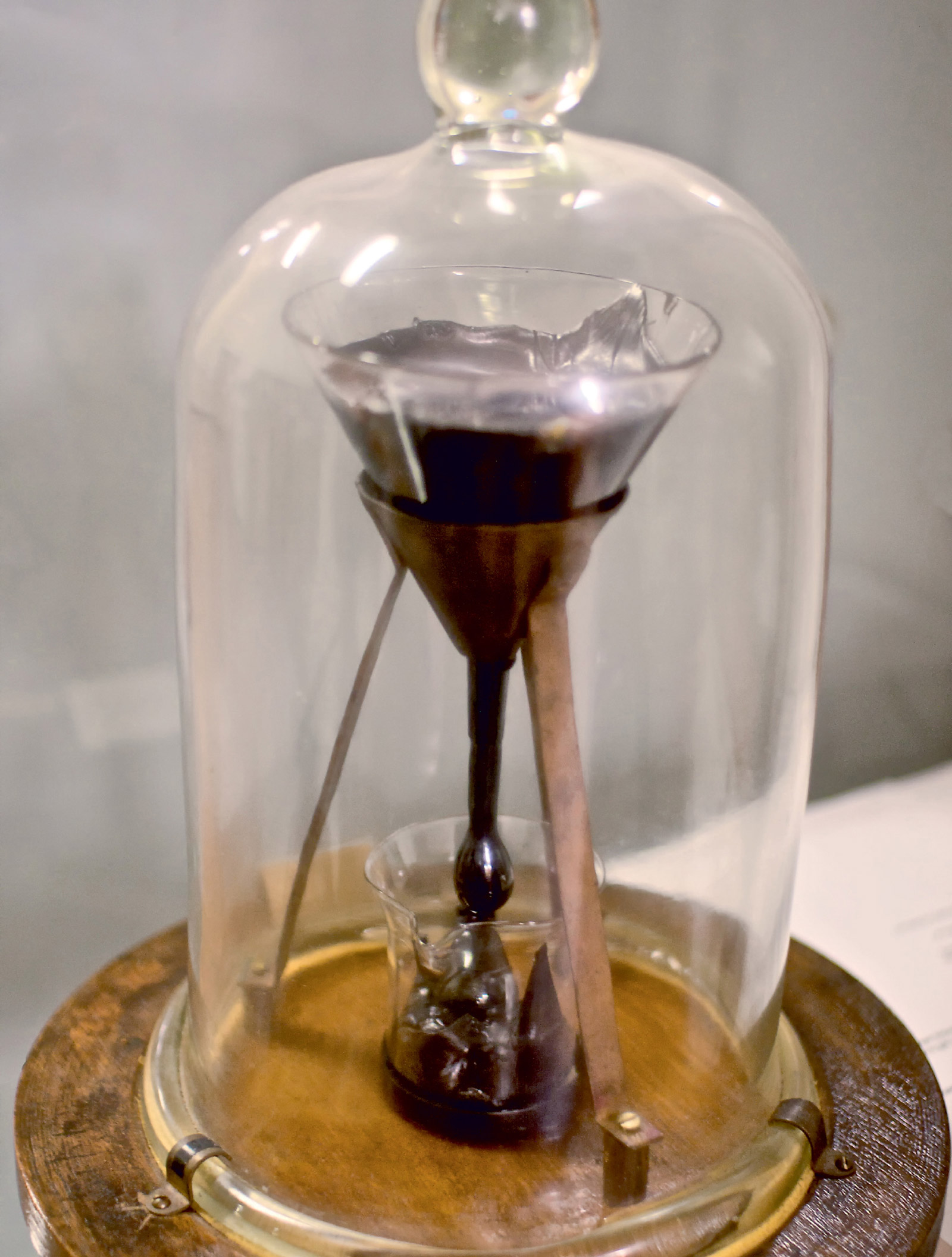A Test of Patience
Waiting on the world’s longest-running laboratory experiment
Mats Bigert
Imagine that you are waiting for an extraordinary moment, the moment of your life: marriage to your true love, or the birth of your child. The only problem is that it will not happen—not for a while at least. We are used to waiting for such momentous occasions, but rarely for more than a year or two: plans projected too far into the future elude our ability to conceptualize their realization. When it comes to scientific experiments, however, expectations are sometimes framed within a different temporality. In the case of the Pitch Drop Experiment, this temporality is very different.
The Pitch Drop Experiment was initiated in 1927 by Professor Thomas Parnell of the University of Queensland in Brisbane, Australia, to demonstrate for his students that some substances that appear to be solid are actually fluid. A heated sample of pitch, a naturally occurring petroleum substance, was poured into a funnel-shaped glass container and sealed. After three years, the sample had apparently coagulated and it was time to kick-start what is now the longest-running, and what must surely be one of the slowest, laboratory experiments in history. Parnell unsealed the funnel and the pitch was free to flow. After a couple of years, a drop began to form, but it took eight years for it finally to fall, the student audience of the experiment having long since graduated. The experiment continued, nevertheless, since it required no maintenance, and every eight or so years, a little baby drop left the nest of mama pitch for the growing expanse of papa pitch below. Eventually, after the eighth, and most recent, drop fell on 28 November 2000, the viscosity of pitch was finally calculated to be roughly one hundred billion times that of water.

To date, no one has ever witnessed an actual drop fall and there is no visual documentation of the dramatic event. The closest anyone has ever come was in April 1979 when Professor John Mainstone, who now maintains the experiment, came to work on a Sunday afternoon. He noted that the pitch drop was just about to touch down, but he did not have time to stay and watch. On returning the following morning, Mainstone saw, much to his chagrin, that the drop had fallen. Even modern technology has been foiled in its attempt to capture direct evidence of the pitch’s clandestine maneuvers; a video camera placed to monitor the experiment happened to fail at the very moment the eighth drop fell.
Given an average interval of eight-and-a-half years between each drop, the pitch, now nine years pregnant with its current drop, might be expected to give birth any day now. But as it turns out, the intervals between drops have lasted anywhere between seven and twelve years due to variations in temperature, the funnel’s location in the public foyer of the physics department leaving it particularly susceptible to environmental effects. And the twelve-year span between the last two drops is explained by the fact that air conditioning was recently installed in the building. It could turn out that my daily habit of checking in on the current drop via the lab’s recently installed webcam might go on for a while. Though nothing really happens, as an act of resistance against the flow of rapid time the experiment is a great success, transforming the pitch from a physical substance to be scientifically investigated into a metaphysical monument to suspended anticipation.
Mats Bigert is an editor-at-large of Cabinet and one half of the Swedish artist duo Bigert & Bergstrom.
Spotted an error? Email us at corrections at cabinetmagazine dot org.
If you’ve enjoyed the free articles that we offer on our site, please consider subscribing to our nonprofit magazine. You get twelve online issues and unlimited access to all our archives.